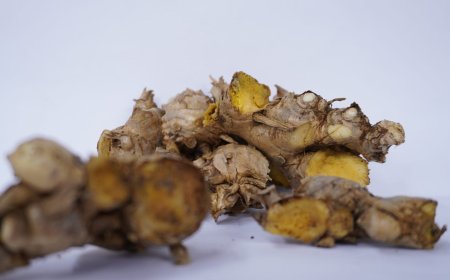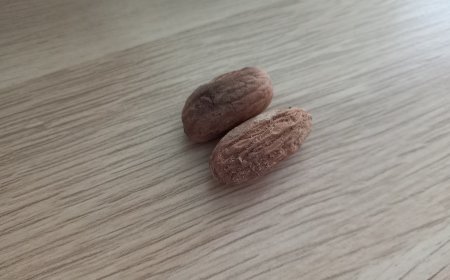The Nagasari Tree: Revealing Hidden Energy in Balinese Traditional Medicine
Bali, not only known as the home to breathtaking natural landscapes and captivating arts and culture, but also renowned for traditions and beliefs passed down from generation to generation as an extraordinary heritage from ancestors. One of the ancestral legacies that has evolved as a form of community belief is Usadha Bali.
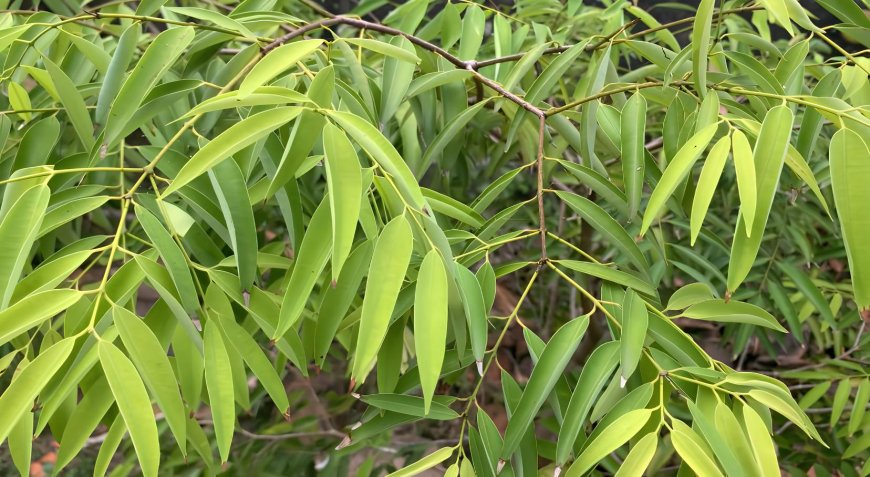
Speaking of Usadha, it is believed to originate from the Sanskrit language, namely ausadha, which means medicinal plants or those made from plants. However, for the people of Bali, the understanding of Usadha is broader, encompassing all methods for healing diseases, treatment, prevention, disease prediction, the journey of illness, and recovery.
Usadha Bali is a blend of traditional medicine and holistic methods that integrate knowledge, herbal remedies, and meditation to achieve physical balance and unite spiritual, emotional, and mental dimensions. Ancestors realized that true health involves not only the body but also the soul and mind. Usadha Bali is not just a ritual or religious practice but a belief system deeply rooted in the philosophy of Balinese life. Ancestors wisely bequeathed Usadha as an essential part of daily life, not just as a tradition but as a worldview reflecting a harmonious relationship between humans, nature, and spirits. Usadha Bali serves as a spiritual guide to maintain balance, reminding people to live in accordance with the Tri Hita Karana principle.
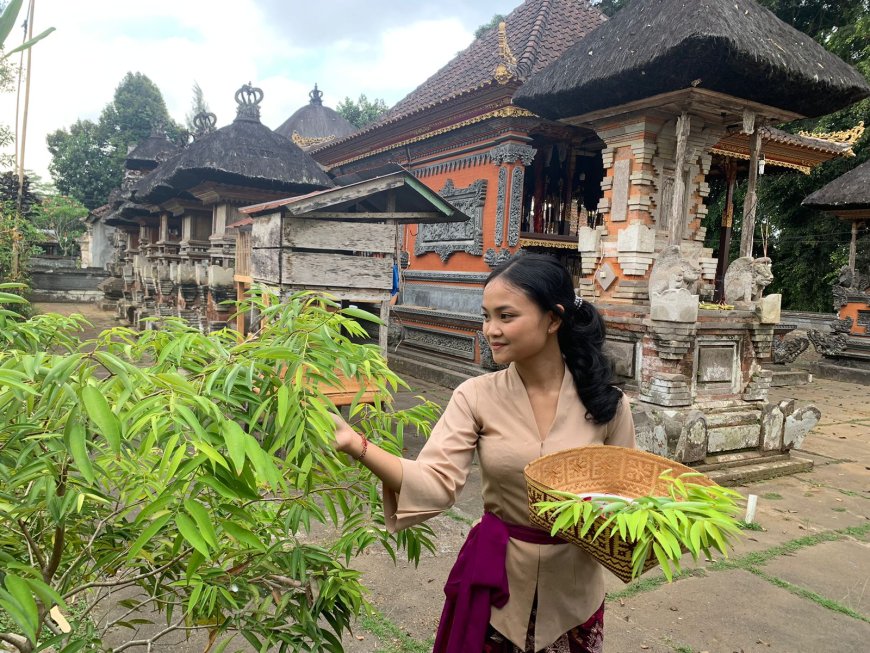
Harvesting Nagasari Tree Leaves (Source: Personal Collection)
Usadha Bali has become a magnet for those seeking healing and relaxation amid the chaos of the modern world. Traditional Balinese medicine, generally derived from natural resources (plants), is believed by the Balinese people to be an alternative for healing and maintaining health. One uncommon plant known as Usadha in Balinese belief is the Nagasari Tree. Surprisingly, this rare tree possesses benefits and uses that are often unknown to the general public in the world of traditional medicine.
The Nagasari Tree falls into the category of "Usadha Gede," encompassing various diseases along with their respective treatments and healing mantras. Originating from India with the Latin name Mesua Ferrea Linn, it belongs to the Calophyllaceae family. In trade literature, the Nagasari Tree is also known as Ceylon ironwood, Indian rose chestnut, and Cobra's saffron. While the Nagasari Tree is abundant in Java and Bali, obtaining it in Bali is challenging due to its sacred and rare status. It is often considered a sacred tree found in historical figure tombs or sacred areas like temples and rarely found in residential yards. Balinese people also utilize the Nagasari Tree as an essential element in ceremonies, particularly in yadnya ceremonies.
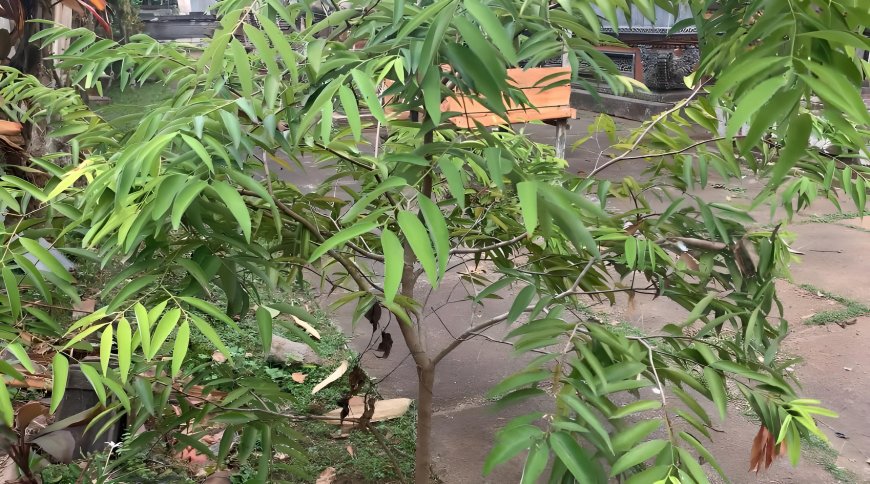
Nagasari Tree in Temple Area (Source: Personal Collection)
The Nagasari Tree is characterized by a diameter of approximately 50 cm and can reach a height of 20 m. It has young leaves that are drooping, ranging from red to pinkish-yellow, while mature leaves are narrow, elongated, dark green, and slightly whitish on the undersides. Its fragrant white flowers, with a diameter of 4–7.5 cm, have four petal lobes and numerous stamens in the center. The Nagasari fruit has a tough skin containing 1-4 seeds. The Nagasari Tree's wood has a hard texture with a dark brown bark, while the wood itself has a reddish-brown color with beautiful grain patterns.
Now, what are the benefits and the process of making Nagasari Usadha? The Nagasari Tree, with its diverse potential, is an extraordinary tree that not only captivates the eyes but also brings a myriad of benefits. From its wood, we can create elegant and sturdy furniture, complemented by a natural touch emanating from the produced floor and beams. Equally intriguing, the Nagasari Tree's flowers offer natural healing properties, serving not only as decorative elements but also as remedies for diarrhea, creators of amazing aromas, and even powerful soothers of the soul. The expectorant properties of these flowers make them more than just decorative elements, representing a manifestation of the wisdom of nature that maintains the balance of body and mind.
Not stopping there, the Nagasari Tree's thread enriches its benefits. As a fever reducer and body coolant, this thread invites us to contemplate the wonders of natural remedies. Similarly, its seeds, like magical powder, have the ability to fulfill various needs, from medicinal purposes to daily necessities. Meanwhile, the tree's latex provides a unique touch in protecting wounds, proving that nature is the best pharmacy we can access.
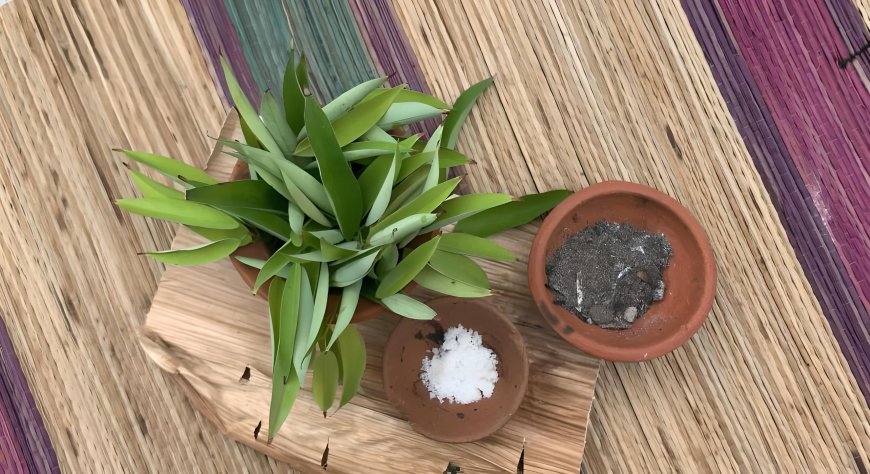
Ingredients for Usadha for Painful Urination (Source: Personal Collection)
If you experience discomfort during urination, you can prepare ingredients such as salt, charcoal, and, of course, Nagasari leaves as a remedy. It's quite simple, just place salt and charcoal on Nagasari leaves, roll them up, and you can consume them directly to alleviate the pain during urination. Second, it is believed that any illness with a heating effect on the body can be cured with this plant by making a concoction from one part of the Nagasari Tree. For this, you only need to prepare warm water, a glass, and Nagasari leaves. The process involves placing Nagasari leaves in the glass, pouring hot water over them, waiting a few minutes while stirring occasionally, before you can drink it.

Ingredients for Body Heat Usadha (Source: Personal Collection)
Other believed benefits of the Nagasari Tree include enhancing a person's authority and charisma, maintaining marital harmony, and strengthening both physical and spiritual strength. However, it is essential to remember that each Usadha should be created and used according to individual beliefs to provide positive benefits for health and safety.
The Nagasari Tree, with all its potential, is more than just an ordinary flora. It is a symbol of wonder, harmony, and collaboration between humans and nature. Considering Nagasari's rarity, and it's not commonly found, we need to preserve its existence in our surroundings for the sustainability of this Nagasari plant. Through wise utilization, we not only enrich our daily lives but also celebrate the beauty of life bestowed by our ancestors. This is the fascinating story of the Nagasari Tree, which not only lives among the trees of Bali but also in our hearts and daily lives.


















































